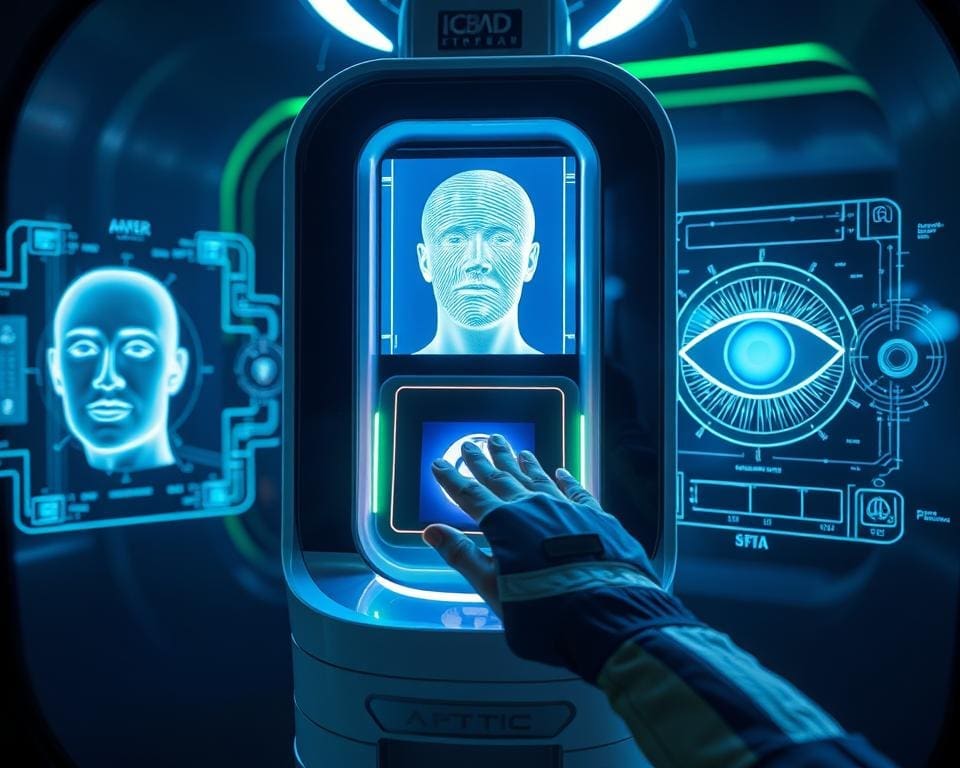In an ever-evolving digital landscape, biometrics stands at the forefront of future technology, revolutionising personal security. By leveraging unique physical and behavioural characteristics, biometrics creates robust security solutions that provide individuals and organisations with enhanced methods for identification and access control. As concerns around safety and privacy intensify, the significance of biometrics cannot be understated; it represents a shift towards smarter, more secure verification processes. Among the various methods emerging, fingerprint recognition and facial recognition exemplify the innovative approaches being adopted, making biometrics a pivotal topic in contemporary technological discourse.
Understanding Biometrics and Its Role in Security
Biometrics serves as a cornerstone in the realm of security, utilising unique physical traits for authenticating individuals. This approach not only enhances safety but also promises a more seamless experience in various applications.
Defining Biometrics
At its core, biometrics refers to the identification of individuals based on their distinct physiological characteristics. This technology leverages various traits such as fingerprints, facial features, and iris patterns. By analysing these attributes, biometric systems provide accurate and reliable methods for verifying identity, offering a significant improvement over traditional security measures like passwords and PINs.
Types of Biometric Systems
The landscape of biometrics is diverse, featuring several types of biometric systems tailored to different applications. Popular systems include:
- Fingerprint Recognition: One of the earliest forms, this system scans and compares the unique patterns on a person’s fingertips.
- Facial Recognition: Utilises advanced algorithms to identify individuals by analysing the unique features of their faces.
- Iris Scanning: Involves capturing and interpreting the unique patterns in the coloured part of the eye.
- Voice Recognition: Identifies individuals based on their unique vocal characteristics and speech patterns.
Advantages of Biometric Technology
The advantages of biometric technology extend beyond mere convenience. Key benefits include:
- Enhanced Accuracy: Biometric systems offer higher accuracy levels compared to traditional methods, significantly reducing the chances of false positives.
- Reduced Fraud: The unique nature of physical traits minimises the risk of identity theft, providing a layer of security that passwords cannot.
- Convenience: Users benefit from quick and easy access without the need to remember complex passwords or carry extra credentials.

Biometrics: The Future of Personal Security
As the world increasingly embraces advanced technologies, biometrics emerges as a fundamental component in the realm of personal security. Understanding the current trends in biometric applications reveals how innovative technologies shape our security landscape.
Current Trends in Biometric Applications
Recent advancements in machine learning and artificial intelligence have transformed biometric systems significantly. Technologies such as:
- Enhanced face recognition capabilities
- Improved voice recognition accuracy
- Integration of biometric identifiers with mobile devices
These innovations reflect a shift towards more secure and efficient future technology applications. As more individuals and businesses adopt biometrics for authentication and identification, the relevance of these methods in protecting personal information continues to grow.
The Impact of Biometric Technology on Personal Security
The implications for personal security are profound. Biometrics not only safeguard mobile devices through fingerprint recognition but also play crucial roles in:
- Securing access to financial services
- Enhancing security measures in public spaces
- Supporting law enforcement with robust surveillance systems
These advancements demonstrate how biometrics will significantly influence everyday life, facilitating a safer environment and more reliable identity verification.
Popular Biometric Methods for Enhanced Security
Biometric technologies are revolutionising the way individuals secure their identities. The following methods represent the most popular biometric approaches employed today, showcasing their unique strengths in enhancing security protocols.
Fingerprint Recognition
Fingerprint recognition remains a highly trusted method due to its reliability and ease of use. Commonly found in smartphones and various security systems, this technology scans the unique patterns of an individual’s fingerprints, ensuring quick and accurate recognition. This widespread adoption highlights the increasing confidence in fingerprint recognition as a means of securing personal data against unauthorised access.
Facial Recognition
Facial recognition technologies are gaining traction in both personal devices and governmental applications. By analysing various facial features, this method provides a robust way to authenticate identity quickly. Such capabilities extend to areas such as surveillance and even access control, marking facial recognition as an indispensable tool in the realm of security.
Iris Scanning
Iris scanning offers a high level of accuracy, making it an exemplary option in secure environments. This technology works by capturing and analysing the intricate patterns found in the iris, resulting in a unique biometric map for each individual. As security requirements intensify, iris scanning is increasingly becoming a preferred choice for institutions demanding stringent access controls.
Voice Recognition
Voice recognition is rapidly evolving, introducing unique applications across various fields. This method harnesses vocal characteristics to identify individuals, with uses ranging from voice-controlled virtual assistants to banking security. As technology advances, voice recognition is establishing itself as a significant player in the biometric landscape, providing convenience alongside enhanced protection.
Integrating Biometrics into Everyday Life
The incorporation of biometrics into daily routines is reshaping how individuals interact with technology and secure their identities. With advancements in biometric technology, aspects of life once considered secure are now becoming more accessible and user-friendly through the integration of this sophisticated mechanism.
Biometrics in Personal Devices
Smartphones and tablets lead the example of biometrics utilisation in personal devices. Facial recognition and fingerprint sensors allow for secure access, making it easier for users to unlock their gadgets quickly. The seamless experience provided enhances convenience while upholding security, ensuring that personal information remains protected from unauthorised access.
Applications in Financial Services
In the realm of financial services, biometrics have revolutionised how individuals conduct transactions. Banking applications now often incorporate fingerprint and facial recognition, providing secure authentication methods for accessing accounts and authorising payments. These features not only reassure users about security but also offer a streamlined approach to managing finances.
Biometric Solutions in Public Spaces
Public spaces, including airports and railway stations, increasingly rely on biometric solutions to enhance safety and efficiency. Real-time identity verification through biometric systems facilitates smoother movement of individuals, reducing wait times and improving overall security. With this approach, public safety becomes a shared responsibility between authorities and the technology implemented.
The Future of Biometric Technology
The future of biometrics is not merely a continuation of current trends, but a transformative phase that intertwines emerging technologies with personal security. As we delve deeper into digital innovation, advancements in artificial intelligence promise to enhance biometric systems significantly, making them not only faster but also more accurate. This evolution heralds a new era where biometric authentication will become even more integral to safeguarding our identities and assets in a rapidly changing environment.
Furthermore, the convergence of biometrics with technologies like blockchain offers unparalleled security solutions, allowing individuals to have a more secure, decentralised method of managing their personal information. This integration is not just about enhancing security; it also means greater control for users over their own data, fostering a level of trust rarely seen before. As these technologies evolve, they hold the potential to redefine how we perceive and engage with the privacy of our personal information.
However, the future of technology in biometric applications does raise ethical considerations: the paramount importance of safeguarding privacy cannot be overstated. Robust regulatory frameworks will be essential to protect individual data from misuse, ensuring that the benefits of these technological advancements do not compromise our civil liberties. As we navigate this exciting frontier, it is crucial to balance innovation with responsibility, thereby building a secure foundation for the future of personal security.









